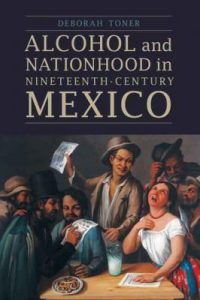It was a great pleasure to have welcomed 15 scholars from around the world to a virtual workshop on 22 May 2020, to start the process of designing a collaborative research agenda on the global relationship between alcohol and race. Originally, we had planned a full-day event to take place at the University of Leicester, but in the context of coronavirus lockdown we convened a much shorter online meeting via Zoom. As such virtual research events seem likely to become more common in the future, for environmental as well as safety reasons, we wanted to provide a (hopefully helpful) outline here of how we organised the meeting, how it worked and the collaborative approach we’re taking.
Firstly, we circulated a call for expressions of interest via the Drinking Studies Network (DSN) and beyond, and invited a few people directly. We asked them to describe how their research interests intersected with, or could develop in new directions in response to, some broad questions, which we would then use the workshop to refine.
From the call for Expressions of Interest:
Stereotypes about “national” or “ethnic” drinking styles can be harmful, both by shaping drinking behaviours and by fostering racial prejudice. Racial stereotypes have shaped alcohol regulation, marketing practices and harm-reduction policies in many parts of the world, since at least the nineteenth century. Some continue to do so to this day, with serious consequences for public health and race relations. The aim of this collaborative research is to explore, from both historical and contemporary perspectives:
– how such stereotypes develop, change or solidify over time in different places
– the extent and effects of transnational exchanges and debates about alcohol and race
– how stereotypes about different ethnic or racial groups have shaped one another
– the role(s) of alcohol in the expression of ethnic identities
– the most pressing gaps and challenges in our knowledge about the relationship between alcohol and race
To maximise the time available for discussion, we circulated the collated responses from participants in advance, encouraging everyone to think about potential connections we could explore together. Jamie and I prepared several ideas for grouping participants around emergent themes, which we pitched and debated during the first main discussion session. Based on this, we then allocated everyone to one of three breakout groups on
– The “Black Diaspora”
– Imperial Contexts (Regulatory Regimes & Imperial Identity)
– Circulation of ideas about Alcoholism
After the breakout sessions, we returned to whole group discussion to feed back the ideas that had been generated. Here’s the schedule we used:
2.00pm: Welcome, Introduction, Ground Rules for Zoom Meeting [inset]
2.10pm: Updates on Research Interests
2.30pm: Discussion to Identify Group Topics/Themes
3.00pm: Break and Breakout Groups Set-up
3.15pm: Breakout Group Discussions
3.45pm: Whole Group Discussion of Breakout Sessions
4.15pm: Conclusions and Next Steps
4.30pm: End
The fifteen-minute break in the middle was critical, I think, for both participants and us as organisers. We stretched across time zones from California to Poland, via Mexico, Brazil, Ireland, the UK and Germany. This meant that some people had a very early start to their working day, while others were right at the end of theirs. I found that chairing the meeting online demanded a level of multi-tasking, combined with technological challenges, that left me feeling as tired as I would normally be at the end of organising a two-day conference. Despite prior practice on Zoom, a superfast broadband connection, and a two-screen set up in my home office, the fifteen-minute break allowed me to uncover a subtle settings change, and one frozen screen, which made it impossible for me to set up the breakout rooms. A computer restart and some slightly breathless clicking later, the problem was solved, although not without me realising that I hadn’t switched off my video during the panicky period of troubleshooting. Everybody was kind enough not to mention having to look at nothing but my confused face for seven or eight minutes.

That aside, the workshop as a whole went well. In some ways, doing the event in a virtual setting was an improvement. In particular, I doubt that a physical one-day workshop in Leicester would have had such a range of international guests. The whole group discussion sessions were a little more directed than likely would have been the case in a physical setting, but the smaller-group breakout sessions were very lively and generated some excellent ideas for future collaborative work. The shorter duration of the workshop as a whole, and the panels within it, were perhaps also a blessing, ensuring that energy levels remained high through-out.
The ultimate goal of this workshop was to take the first steps towards producing a co-authored book on the global relationship on alcohol and race. By forming groups of two or three (or more) authors, examining an aspect of this relationship from different geographical, chronological and/or disciplinary perspectives, we aim to make the most out of working together, achieving a scope that would not be possible as individuals. As an intermediary step, we plan to present one or two panels at the Global Challenges in Drinking Studies: The Drinking Studies Network at Ten conference. This was originally scheduled for November 2020, marking ten years of the formation of the DSN (then, known as the Warwick Drinking Studies Network), but will be postponed to some point in 2021. We’re hoping the collaboration will be an iterative process: generating preliminary ideas and findings in the conference presentations; identifying potential gaps and limits in our coverage of the core issues; recruiting additional authors for the book project; and meeting again, perhaps several times in the online format, to achieve a holistic vision for that book.
In the meantime, if you weren’t able to attend the workshop and you’re interested in being involved in our future work together, please get in touch with me (dt151@le.ac.uk) or Jamie (jh811@le.ac.uk).

